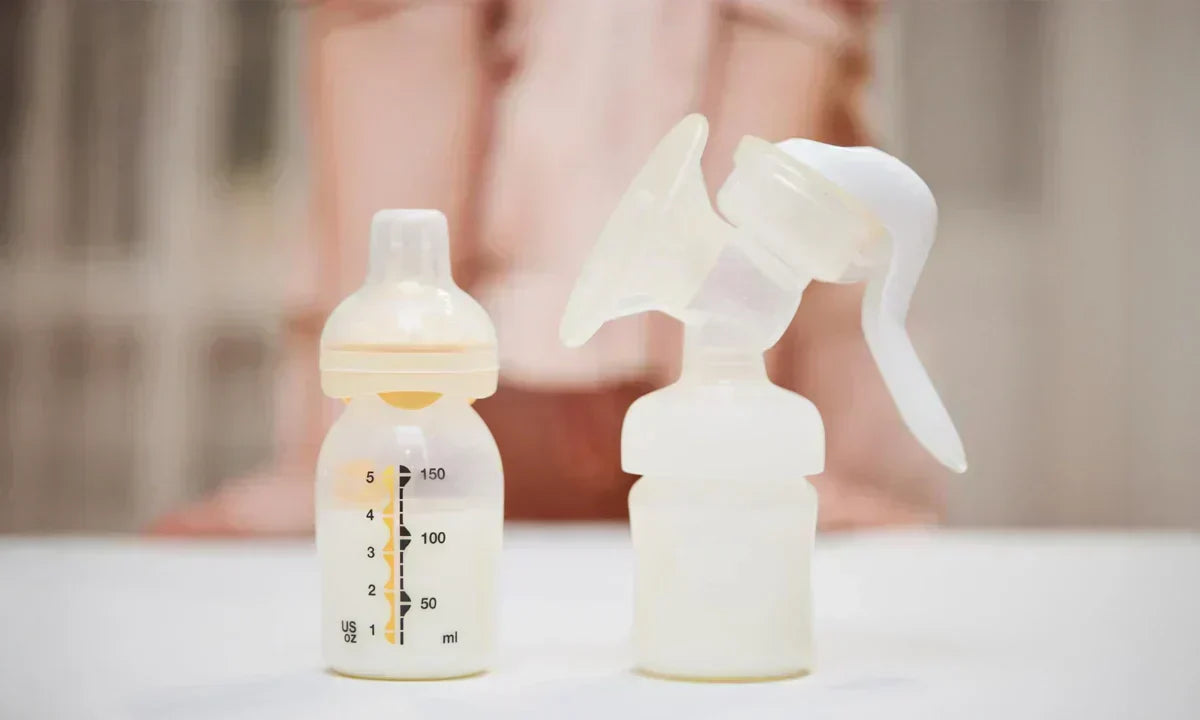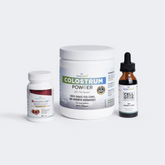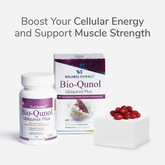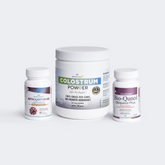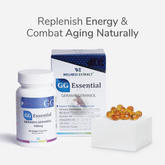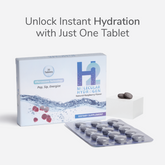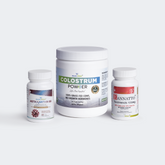Estimated Reading Time: 5 minutes
|Motherhood is a journey like no other, filled with love, wonder, and emotions that often can’t be put into words. The moment you hold your baby for the first time, your world shifts. Along with all the joy, there’s also quiet anxiety: Am I doing this, right? One of the first things you worry about is feeding your little one.
You know your baby needs your milk - but does it come right after birth? Not quite. What arrives first is something called colostrum thick, golden, and rich in nutrients. It may not look like milk, but it’s nature’s first gift to your baby. In this guide, you’ll understand what colostrum is when it arrives and why it’s so important in those early moments.
What is Colostrum?
Colostrum is the first form of milk your body makes for your baby. It’s thick, slightly sticky and typically yellow or orange in color. Even though it may not look like the regular white milk you imagine, it is packed with everything your newborn needs in those first few days.
It contains nutrients, fluids, and natural immunity enhancers to protect against infections. Compared to mature breast milk, colostrum has more protein, a little less sugar, and much less fat. It's like nature’s first superfood just for your baby.
So, the real question is….
When Does Colostrum Come In?
Your body actually starts making colostrum much earlier than you might expect. Thanks to the pregnancy hormones estrogen and progesterone, your breasts begin to change in size and appearance. Your breast cells produce colostrum around the 12th to 16th week of pregnancy. This phase is called lactogenesis I. Some women can even express a little of it by the third trimester.
So, in case you feel that your breasts are not full after giving birth, don’t stress. Your body has been getting ready since around the 16th week of pregnancy and already has colostrum prepared for your baby. This special first milk will stay for a few days until your mature milk starts to flow naturally.
Colostrum is expressed initially 2 - 5 days after delivery, then transitional milk comes. It consists of a mixture of colostrum and mature milk. It is produced from the 5th day up to 2 weeks. This transition is completed 4 - 6 days after delivery, and milk is said to be mature milk.
Why is Colostrum So Crucial for Newborns?
As mentioned earlier, colostrum is packed with essential nutrients and protective factors. Here are some insights about its important role:
-
Supports Baby’s Immune Function
Your colostrum is made of white blood cells that produce antibodies to help fight infections. The colostrum contains a vital antibody known as secretory IgA (SIgA), which helps support the baby’s immune function.
Here’s how: Secretory IgA (or SIgA) is like the body’s frontline defender in a baby’s gut. It helps protect the delicate lining of the intestines from harmful germs and toxins. SIgA works by blocking bad bacteria and viruses from sticking to the gut wall, trapping them in mucus, and helping the body flush them naturally.
-
Supports Baby’s Gut Function
Secretory IgA also plays a significant role in keeping thebaby’s gut healthy and balanced. Recent research shows that SIgA can calm down harmful bacteria, support the growth of good bacteria, and even help the immune system learn what’s safe and what’s not. This helps prevent unnecessary inflammation and lowers the risk of infections and allergies in the early months of life.
-
Promotes Natural Protection Against Jaundice
Colostrum acts like a natural laxative. This helps your newborn pass their first poo, called meconium, which is thick, dark, and sticky. Meconium is made up of everything your baby swallowed while in the womb and clearing it out is an integral part of those first few days.
Here’s why that matters: If meconium isn’t passed quickly enough, a substance called bilirubin can be reabsorbed into the body. That buildup of bilirubin can lead to jaundice, which is quite common in newborns.
So, the more your baby poops, the better! Frequent pooing helps flush out bilirubin and lowers the risk of newborn jaundice. Thanks to the gentle laxative effect of colostrum, your baby receives a natural boost to clear their system from the start.
-
Offers Vitamins and Minerals
Your colostrum is the baby’s first superfood and only source of nutrition in the early days. Its distinctive yellow color comes from the presence of carotenoids and Vitamin A. Other vitamins, such as vitamin C, are present in the colostrum in relatively higher concentrations than in mature milk.
Colostrum also contains several minerals such as magnesium, copper, and zinc. All these help play various vital functions in your baby’s development processes. For example, magnesium is essential for your baby’s heart and bone development. Copper and zinc help support your baby’s immune system.
Whether you're a new mom or expecting, keeping an eye on your vitamin intake is essential. This will help you and your baby to stay healthy, nourished, and strong from the inside out.
Worth Knowing!
Thanks to today’s evolving approaches to health, it has become easier to extend the benefits of colostrum beyond those first few days. Wondering how? Through natural supplements, such as bovine colostrum, with your doctor’s approval. This cow’s first milk, now in powdered form. Easy to add to your child’s or even your own daily routine through simple bovine colostrum recipes.
Conclusion
As a new mom, it’s normal to feel unsure but trust that nature has your back. Your first milk, colostrum, may seem small, but it’s packed with powerful nutrients that protect your baby in the earliest days. That’s why those first 3 to 5 days of breastfeeding matter so much.
Stay calm, follow your body’s lead, and let this golden milk do its magic. Soon, you’ll feel your breasts getting fuller as transitional milk takes over creamy, nourishing, and perfect for your baby’s next step.
Disclaimer: These statements have not been evaluated by the FDA. This content is for informational purposes only and is not intended to diagnose, treat, cure, or prevent any disease. Always seek the advice of a qualified healthcare professional before introducing supplements into your or your child’s diet.
References
-
Colostrum: your baby’s first meal. https://www.healthychildren.org/English/ages - stages/baby/breastfeeding/Pages/Colostrum - Your - Babys - First - Meal.aspx.
-
Jozsa, F. and Thistle, J. (2023) Anatomy, colostrum. https://www.ncbi.nlm.nih.gov/books/NBK513256/.
-
Medela (2025) 'Why is colostrum so important?,' Medela, 15 April. https://www.medela.com/en - in/breastfeeding - pumping/articles/power - of - breast - milk/why - is - colostrum - so - important.
-
Mantis, N.J., Rol, N. and Corthésy, B. (2011) 'Secretory IgA’s complex roles in immunity and mucosal homeostasis in the gut,' Mucosal Immunology, 4(6), pp. 603 - 611. https://doi.org/10.1038/mi.2011.41.
-
Weatherford, A. (2023) What is colostrum and can it reduce jaundice? https://www.bfsuccess.com/what - is - colostrum - and - can - it - reduce - jaundice/.
-
Dror, D.K. and Allen, L.H. (2018) 'Overview of nutrients in human milk,' Advances in Nutrition, 9, pp. 278S - 294S. https://doi.org/10.1093/advances/nmy022.
-
Colostrum (2024). https://www.webmd.com/baby/what - is - colostrum.






